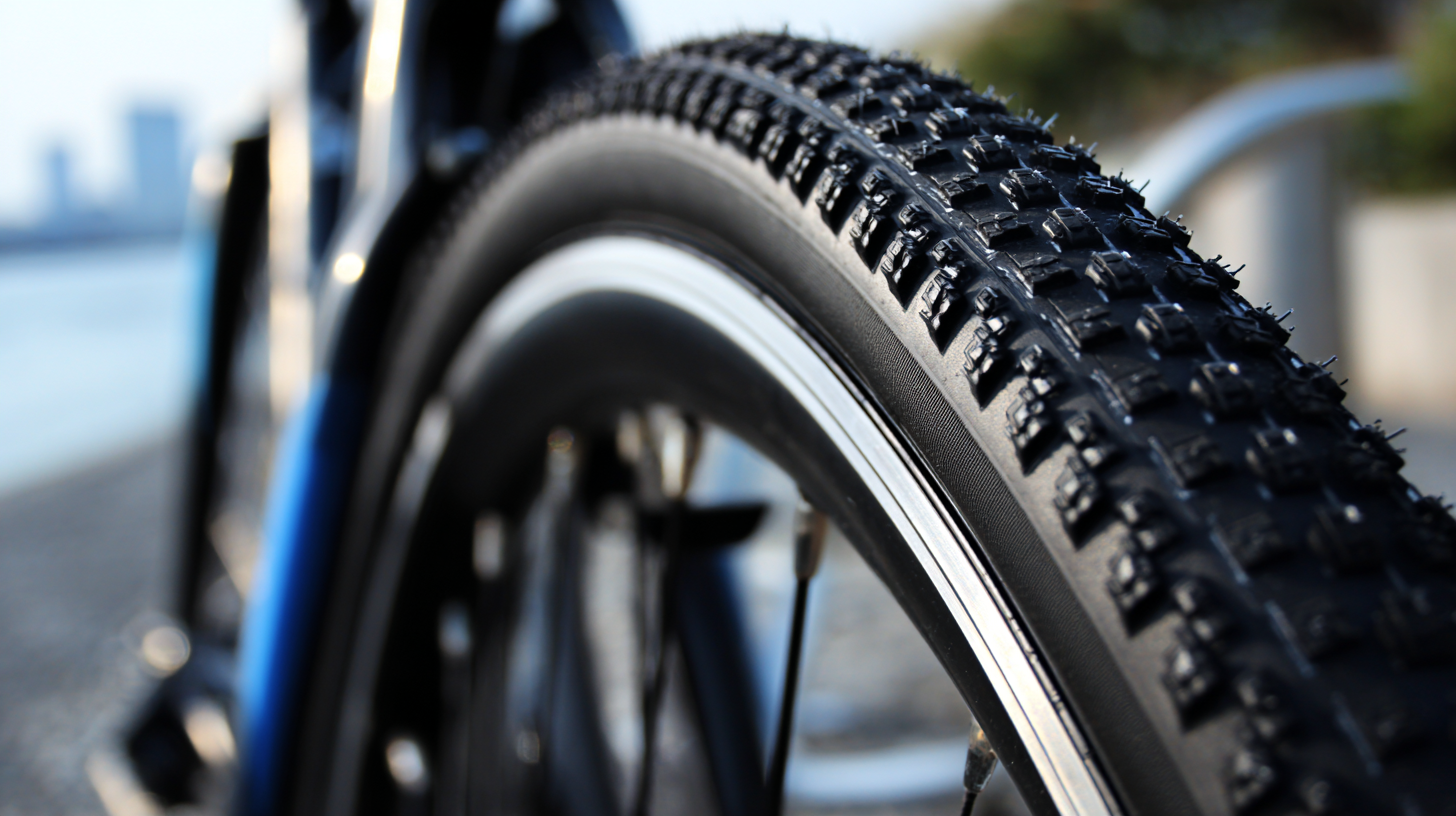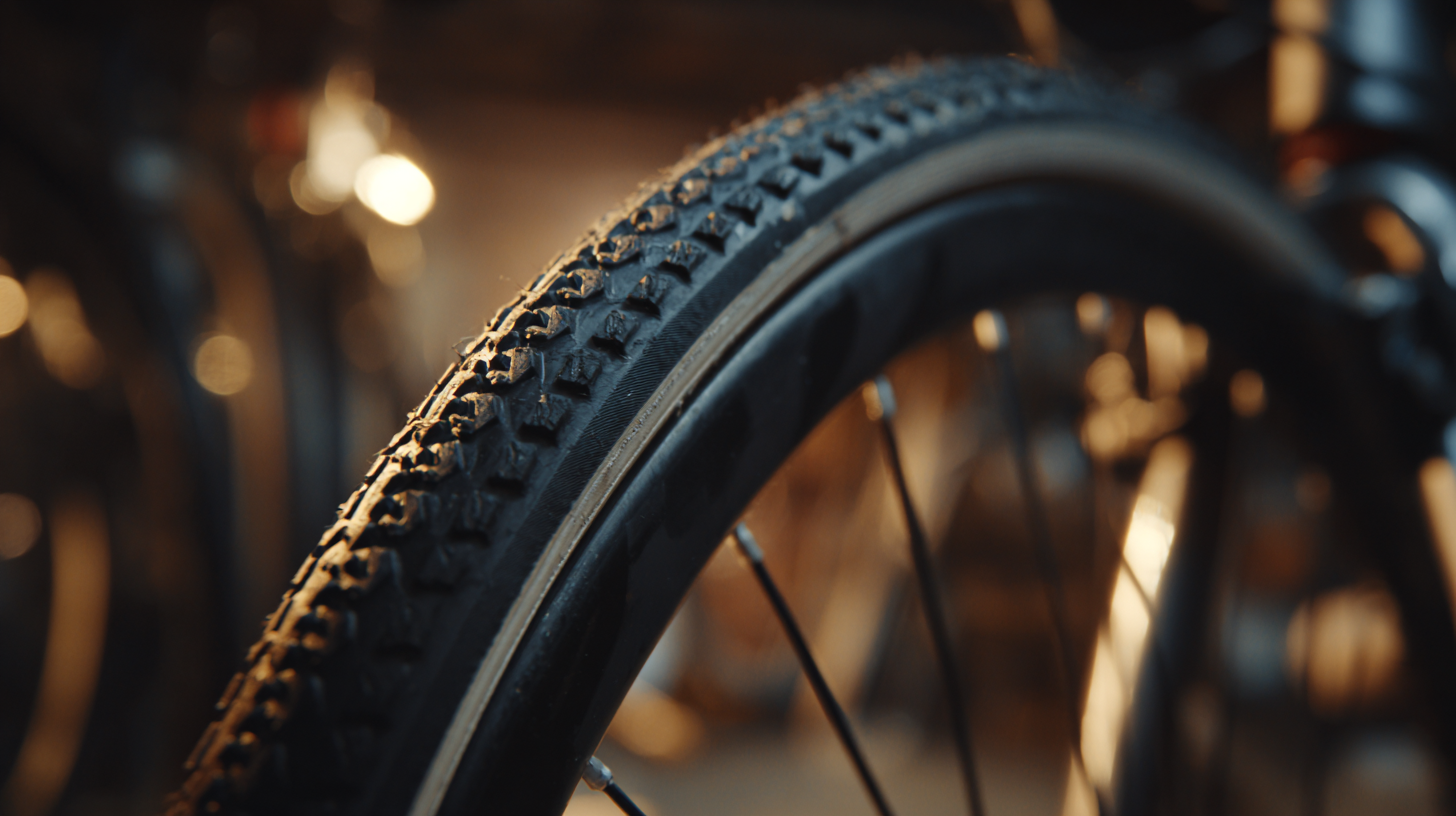Leave Your Message
 Bicycle safety is a paramount concern for cyclists worldwide, and one of the key components that contribute to this safety is the inner tube. According to the National Highway Traffic Safety Administration, nearly 800 cyclists were killed in traffic crashes in the United States in 2020 alone, highlighting the need for reliable equipment that can mitigate risks. A study by the Bicycle Safety Institute indicates that proper maintenance of inner tubes can reduce the incidence of flat tires, which account for 30% of bicycle-related accidents. In addition, research published in the Journal of Bicycle Mechanics shows that high-quality inner tubes can enhance a cyclist's overall control and stability, particularly in challenging conditions. As we delve deeper into the essential role of inner tubes in bicycle safety, understanding the crucial statistics and practical tips on maintenance and selection becomes imperative for every cyclist aiming to ensure a safer ride.
Bicycle safety is a paramount concern for cyclists worldwide, and one of the key components that contribute to this safety is the inner tube. According to the National Highway Traffic Safety Administration, nearly 800 cyclists were killed in traffic crashes in the United States in 2020 alone, highlighting the need for reliable equipment that can mitigate risks. A study by the Bicycle Safety Institute indicates that proper maintenance of inner tubes can reduce the incidence of flat tires, which account for 30% of bicycle-related accidents. In addition, research published in the Journal of Bicycle Mechanics shows that high-quality inner tubes can enhance a cyclist's overall control and stability, particularly in challenging conditions. As we delve deeper into the essential role of inner tubes in bicycle safety, understanding the crucial statistics and practical tips on maintenance and selection becomes imperative for every cyclist aiming to ensure a safer ride.
 Inner tubes are a fundamental component of bicycle safety, serving multiple crucial functions that extend beyond mere tire inflation. The primary role of an inner tube is to hold air, providing the necessary pressure that supports the weight of the rider and ensures a smooth ride. This pressure not only affects the bike's handling but also its stability, which is vital for preventing accidents. A properly inflated inner tube reduces the risk of pinch flats—where the tube is compressed against the rim, leading to punctures—helping cyclists maintain control over their bicycles, especially on uneven terrains.
Inner tubes are a fundamental component of bicycle safety, serving multiple crucial functions that extend beyond mere tire inflation. The primary role of an inner tube is to hold air, providing the necessary pressure that supports the weight of the rider and ensures a smooth ride. This pressure not only affects the bike's handling but also its stability, which is vital for preventing accidents. A properly inflated inner tube reduces the risk of pinch flats—where the tube is compressed against the rim, leading to punctures—helping cyclists maintain control over their bicycles, especially on uneven terrains.
Moreover, inner tubes contribute to shock absorption, which enhances rider comfort and reduces fatigue. This is particularly important during long rides or in challenging conditions, where vibrations can easily lead to a loss of balance. As inner tubes are designed to mitigate impacts from the road, they promote improved traction, allowing cyclists to maneuver confidently during turns or sudden stops. Therefore, understanding the role of inner tubes not only emphasizes their importance in maintaining optimal tire pressure but also highlights their significant impact on overall bicycle safety and performance.
Bicycle safety is a growing concern, and one of the critical factors influencing safety is the integrity of tire systems, particularly inner tubes. Statistics reveal that tire failure is a recurring issue in bicycle accidents, contributing to a significant percentage of mishaps. Research indicates that as much as 30% of serious bicycle accidents are linked to tire-related problems, underscoring the importance of regular maintenance and inspection of inner tubes.
Moreover, data show that punctures and blowouts account for nearly 50% of tire failures in urban cycling environments. These incidents are particularly hazardous in traffic, where loss of control can lead to collisions with vehicles. Riders using high-quality inner tubes, which are less prone to punctures, can reduce their risk of accidents significantly. These statistics highlight the need for cyclists to prioritize the reliability of their tire systems to enhance safety and reduce the likelihood of accidents on the road. Regular checks and timely replacements can play a decisive role in preventing tire-related failures, thereby promoting safer cycling experiences.
| Statistic | Value |
|---|---|
| Percentage of Bicycle Accidents Caused by Tire Failures | 12% |
| Average Number of Bicycle Accidents Annually in the U.S. | 467,000 |
| Proportion of Tire Failure Accidents Resulting in Serious Injury | 34% |
| Average Cost of Bicycle Tire Replacement | $50 |
| Increase in Bicycle Use During COVID-19 | 20% |
| Number of Cyclists Who Check Tire Pressure Regularly | 29% |
| Proportion of Riders Using Proper Inner Tubes for Their Bike Type | 45% |
The quality of inner tubes is crucial to the overall performance and safety of bicycles. A high-quality inner tube not only helps maintain optimal tire pressure but also enhances the bike's handling and ride comfort. Poor quality inner tubes can lead to frequent punctures and flats, disrupting rides and posing safety risks, especially at high speeds or on uneven terrain. The choice of materials and manufacturing processes greatly influences the durability and reliability of inner tubes, making it essential for cyclists to understand the specifications before making a purchase.
Moreover, the impact of inner tube quality extends beyond immediate performance. For instance, a well-constructed inner tube can contribute to greater fuel efficiency in urban cycling, translating to smoother rides and reduced strain on the cyclist. Studies show that riders using premium inner tubes report fewer incidents of air loss and thus enjoy longer, more enjoyable rides. Investing in higher-quality inner tubes ultimately enhances not just the performance of the bicycle but also the overall cycling experience, promoting safer and more consistent travel for cyclists of all types.
This chart illustrates the relationship between the quality of inner tubes and their impact on overall bicycle performance metrics, such as puncture resistance, longevity, and rider satisfaction. Data is based on various studies and surveys conducted on cyclist experiences.
When it comes to bicycle safety, the role of inner tubes cannot be overstated. The material composition of inner tubes significantly impacts performance and safety. Common materials include butyl rubber, latex, and certain synthetic blends. Studies show that butyl rubber, widely used due to its durability and affordability, has a lower rate of air loss—averaging 1-2 psi per day—compared to latex tubes, which can lose air at a rate of 5-10 psi per day. However, latex tubes are known for their lighter weight and superior rolling resistance, making them a popular choice among competitive cyclists.

Understanding the strengths and weaknesses of each material can inform safer cycling decisions. For instance, butyl tubes are less prone to punctures and offer better longevity under regular use, making them ideal for casual riders. Conversely, those looking for performance improvements may opt for latex tubes but should carry a puncture repair kit, given their vulnerability.
Tips: Always inspect your inner tubes for damage and wear regularly. Consider investing in puncture-resistant inner tubes for added safety, especially if you frequently ride in areas with debris. Remember to maintain proper tire pressure, as under-inflated tires can lead to blowouts and reduce overall control.
Maintaining your bicycle’s inner tubes is crucial not only for extending their lifespan but also for ensuring your safety on the road. According to a 2021 report by the Bicycle Product Supplier Association, nearly 30% of all bicycle accidents are attributed to tire failures, often linked to poor tube maintenance. Regularly checking for air pressure is essential; under-inflated tires can lead to pinch flats, while over-inflated tires are more prone to blowouts. The recommended air pressure can usually be found printed on the side of the tube, and it’s best to check this before every ride.
Another important aspect to consider is the storage condition of your inner tubes. A study by the American Bicycle Institute highlights that exposure to UV light can degrade rubber in as little as six months. Therefore, it’s advisable to store your bike indoors or use protective covers when parked outside. Additionally, replacing tubes every five years, regardless of usage, can mitigate risks associated with aging materials. Proper care and timely replacements not only enhance safety but also contribute to a smoother riding experience.







